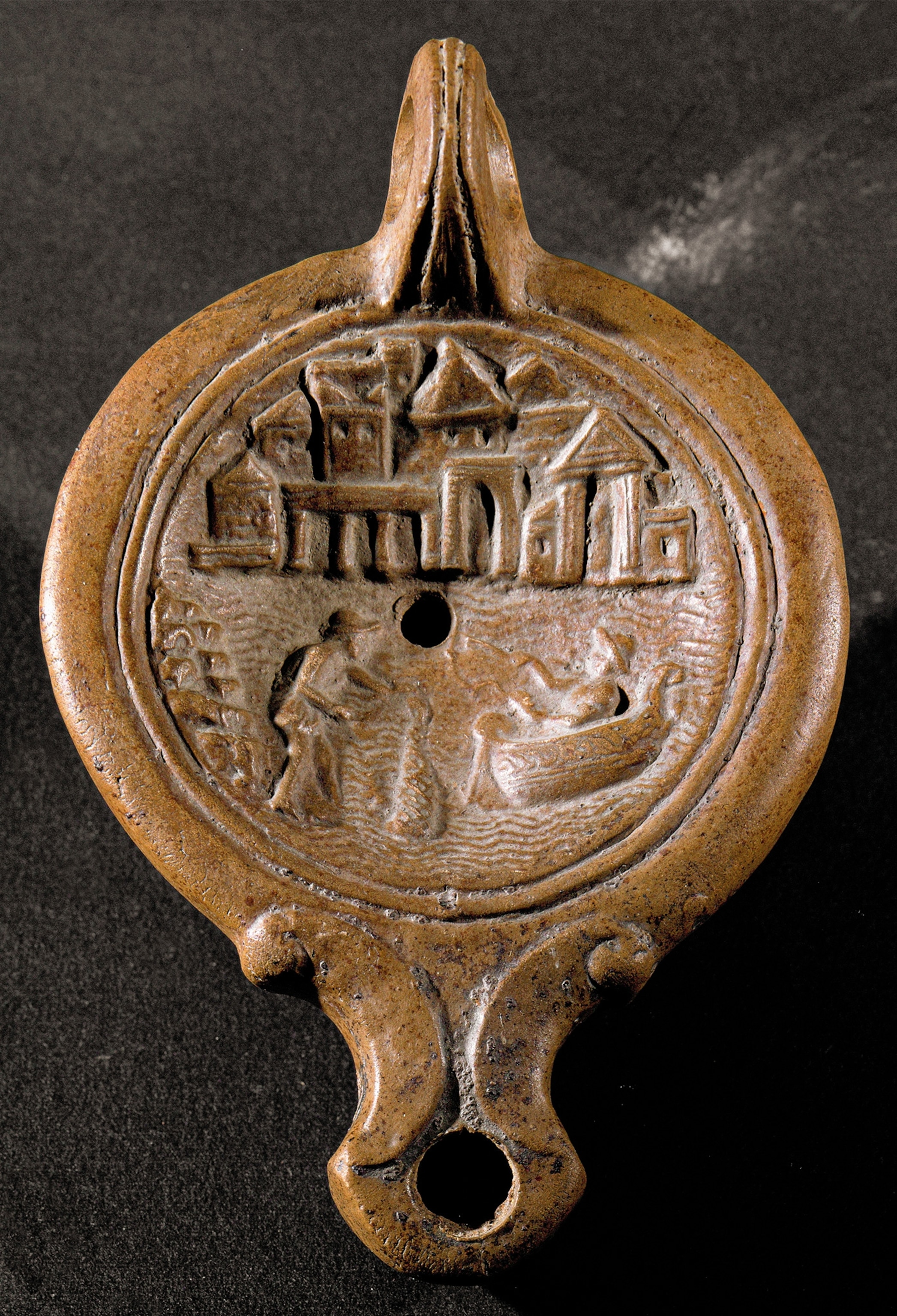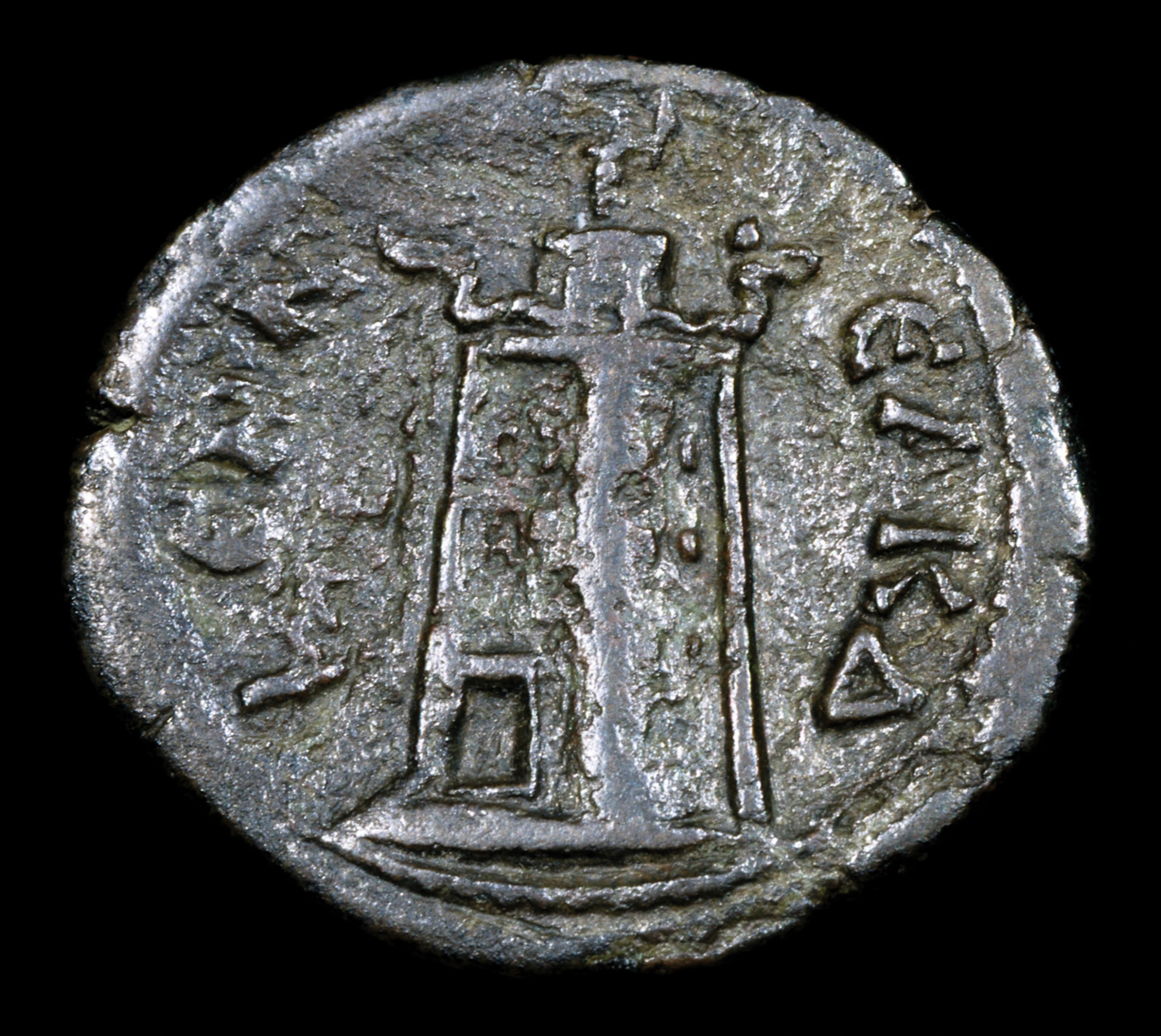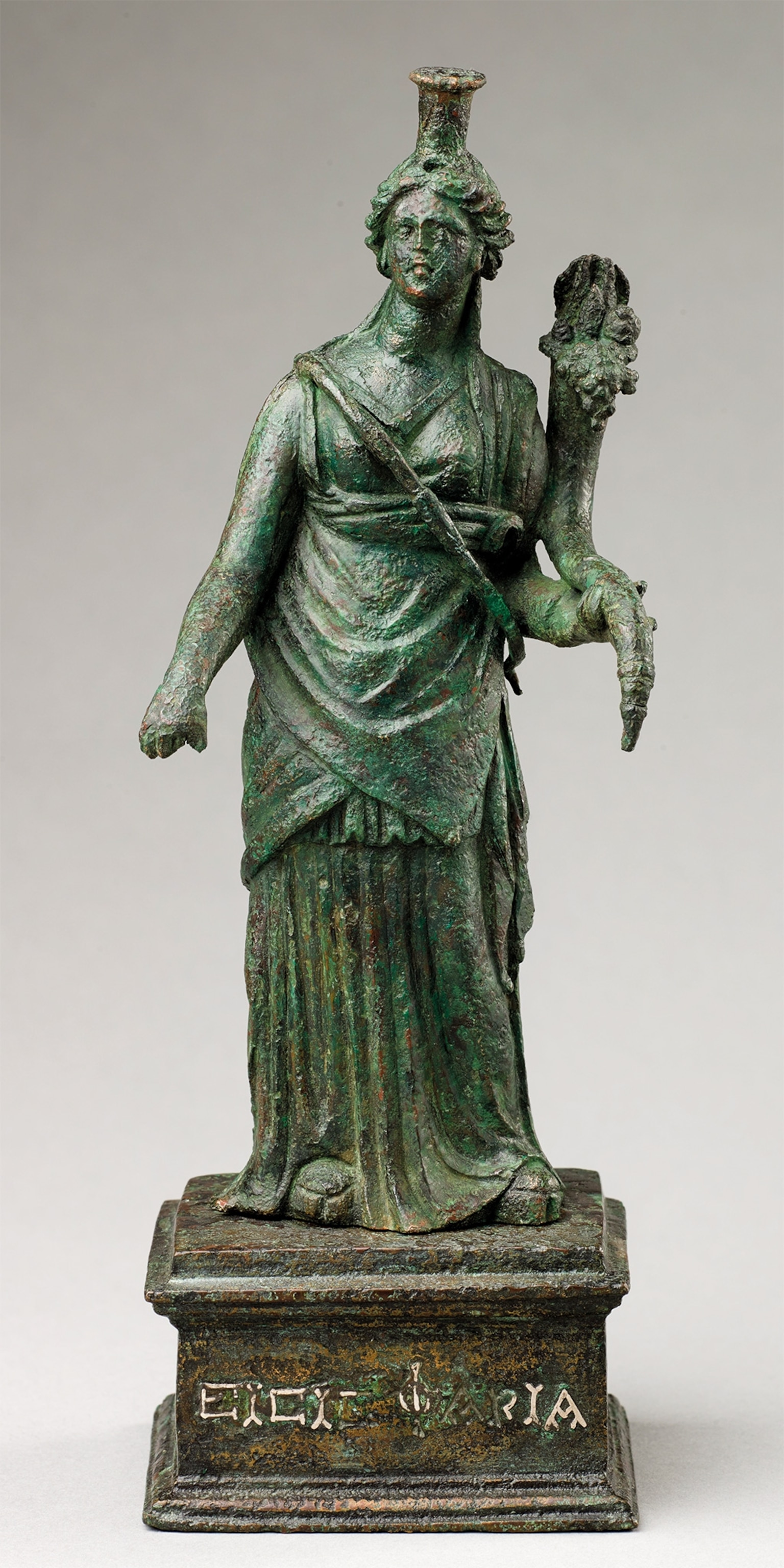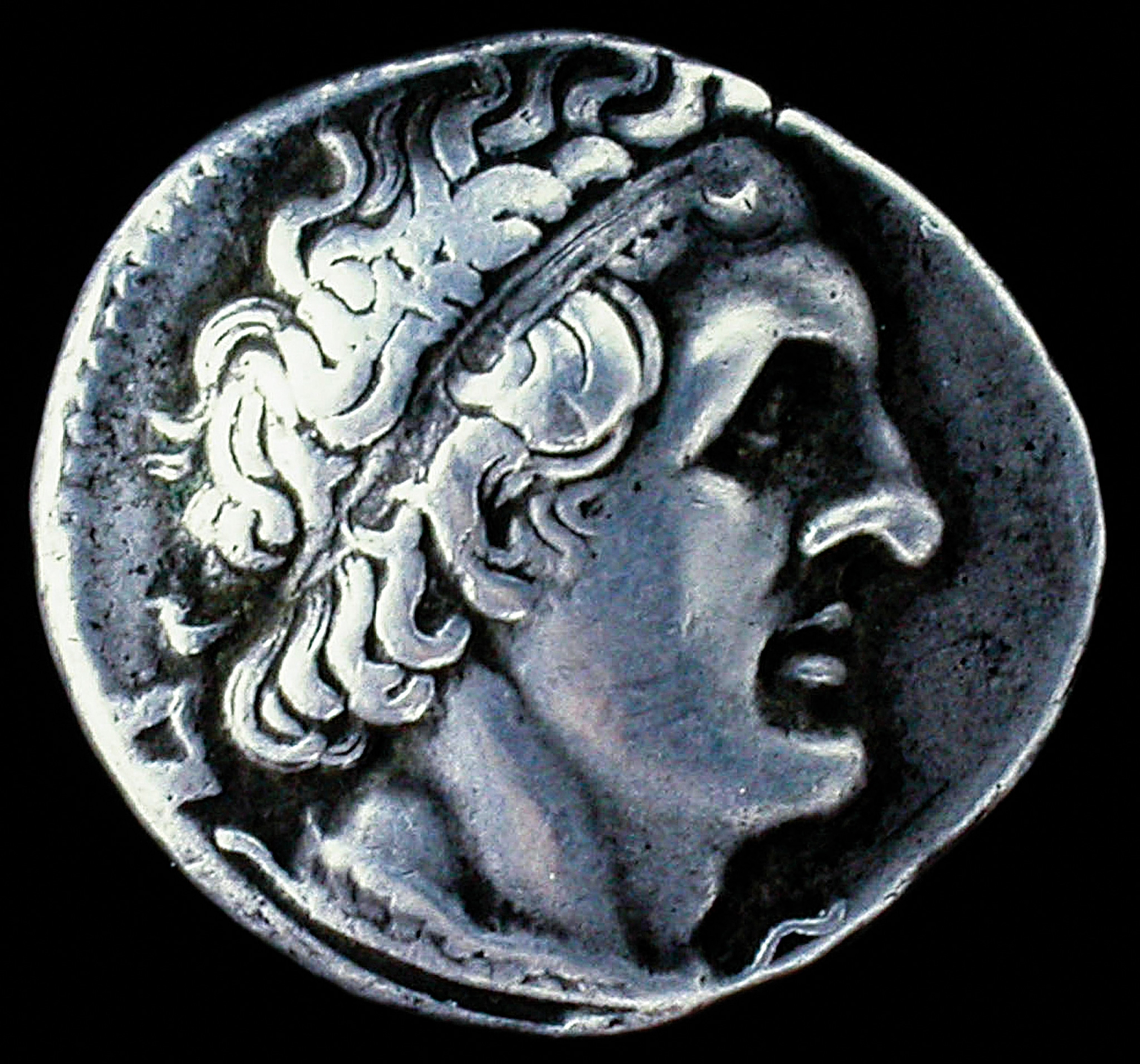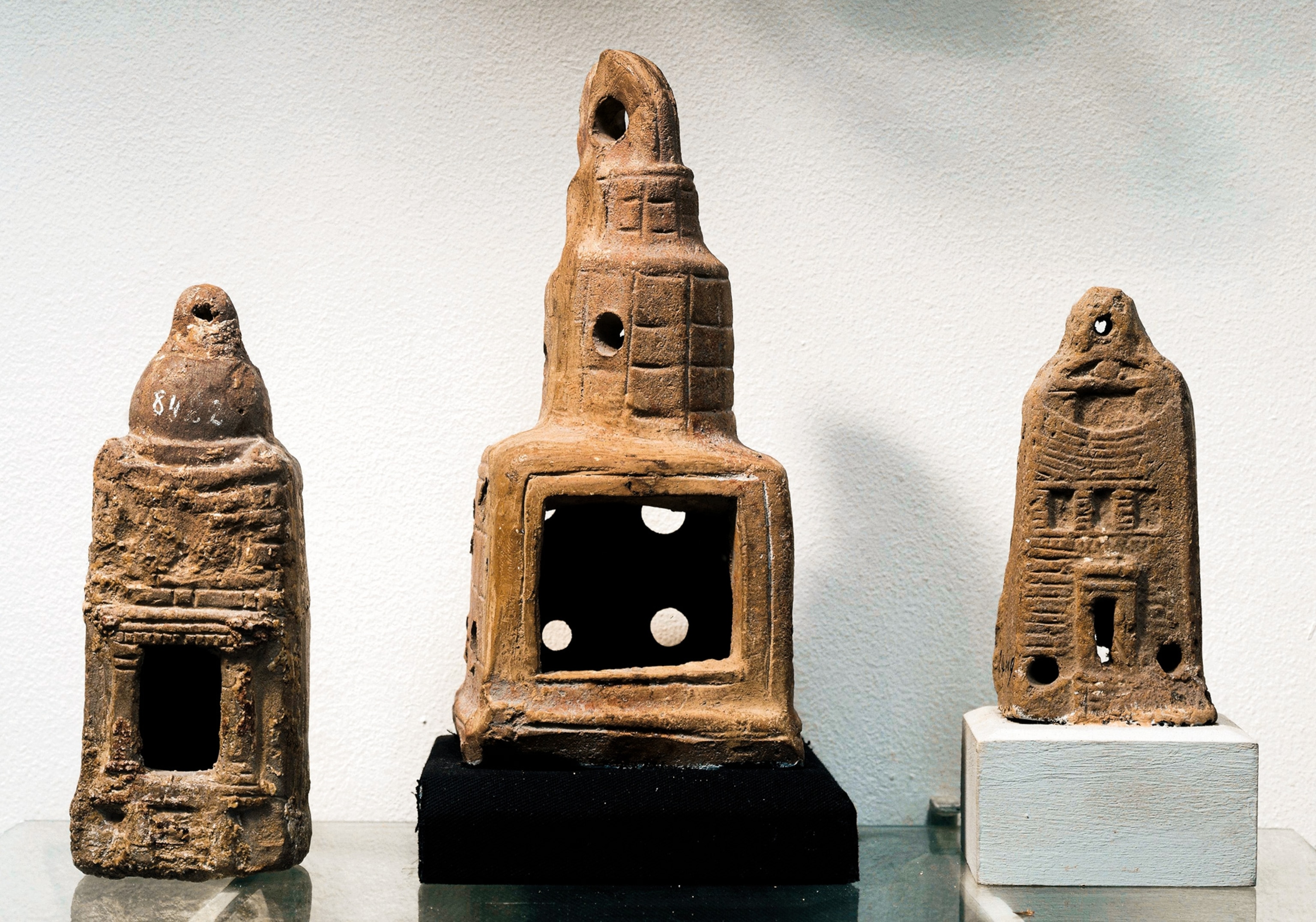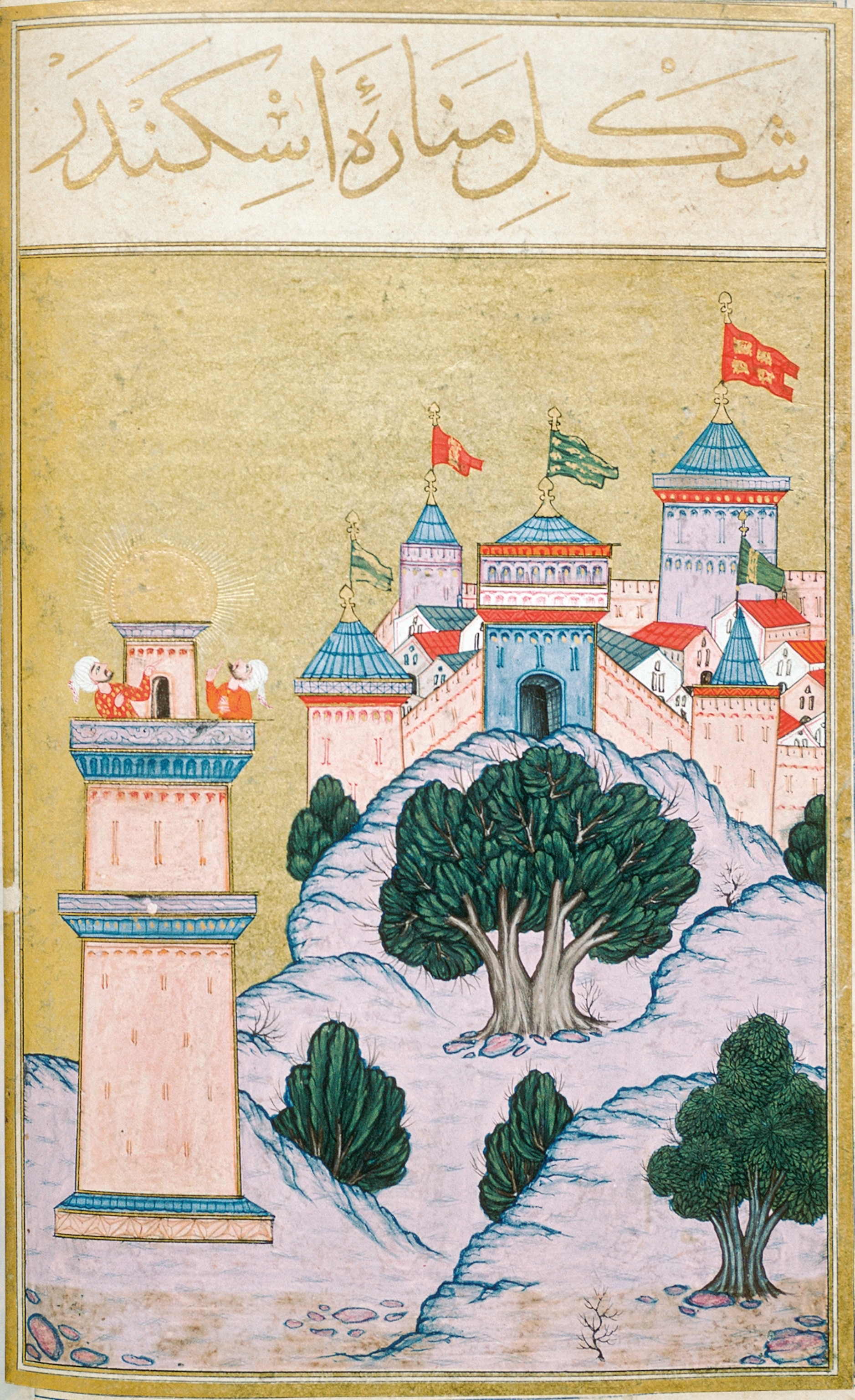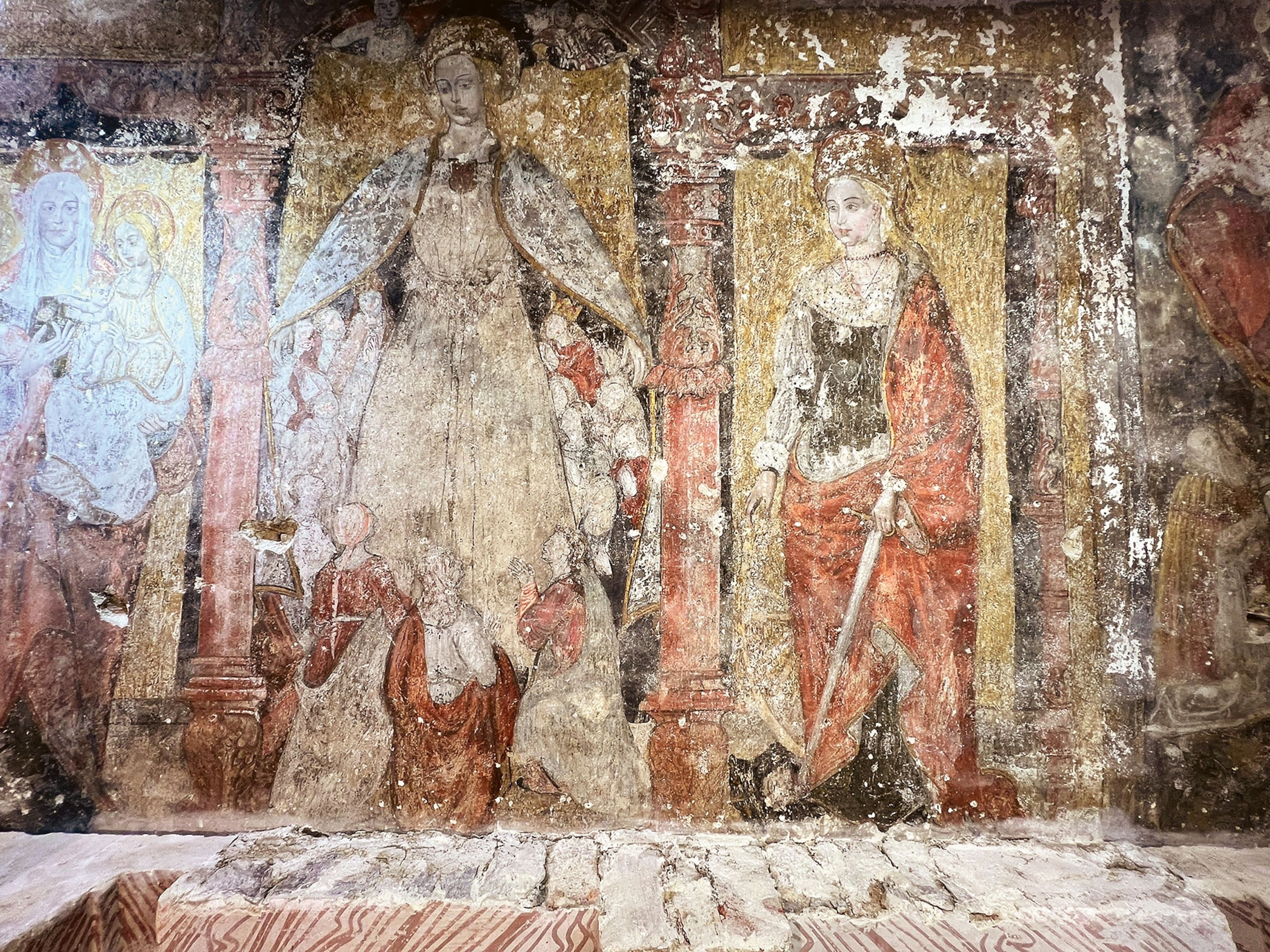This Wonder of the Ancient World shone brightly for more than a thousand years
The Lighthouse of Alexandria towered over the port city founded by Alexander the Great. Guiding sailors for centuries, it stood from the third century B.C. until the Middle Ages.

The Seven Wonders of the Ancient World served a variety of purposes: Some were decorative, like the Hanging Gardens of Babylon. Others, like the Temple of Artemis at Ephesus, were spiritual. While both beautiful and functional, the Lighthouse of Alexandria also served a practical purpose: Its shining light safely guided ships into the Egyptian harbor for centuries, placing the port city at the center of Mediterranean trade in the ancient world.
Alexander the Great founded his eponymous city in 331 B.C. when he was traveling through northern Egypt, escorted by a handful of men. Barely three years had passed since the start of the Macedonian king’s campaign against the Persians, and he had already seized control of the coastal area of the eastern Mediterranean. In the Nile Delta, he decided to found a port that would ensure his control of the seas while also replacing the Phoenician city of Tyre—which he had just razed—as a trade hub. He soon found the perfect spot for the new city: a stretch of land connected to the Nile via the westernmost branch of the delta and protected by Lake Maryut on its southern side.
(Egypt’s Great Pyramids are one of the most iconic wonders of the ancient world.)

In his biography of Alexander, Greek historian Plutarch reported an ominous event during the city’s planning. When Dinocrates, Alexander’s architect, traced the layout of roads and channels of the new city, he did not have any chalk at hand, so he used barley flour instead. No sooner had he finished his work than a huge flock of birds appeared, darkening the sky and devouring the flour. At first Alexander was disturbed by what he thought was a bad omen, but his seers convinced him that it was a sign that his new city would provide sustenance for the whole known world.
Lighthouses of antiquity
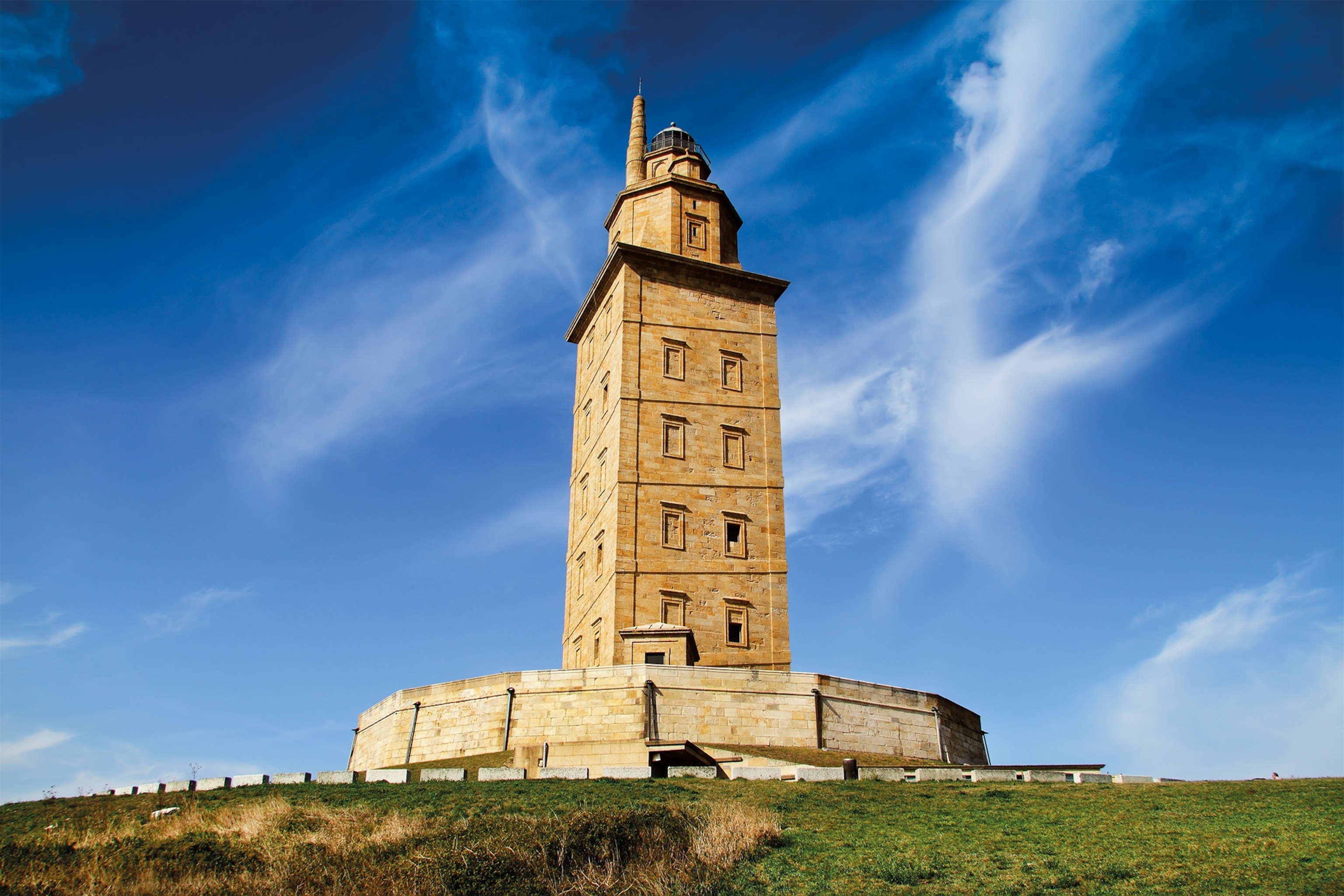
Bonfires lit along strategic coastal points have been documented since the first millennium B.C. Pirates known as “wreckers” used these fires to misdirect ships onto rocks and shoals and would then scavenge the cargo.
The oldest structures considered lighthouses stood on the Greek island of Thassos in the fifth century B.C. After the Lighthouse of Alexandria was built in the third century B.C., lighthouses became popular.
When Rome ruled the Mediterranean, lighthouses appeared from Ostia, Messina, and Ravenna (in Italy) to far off Dover, England. One of the best-preserved Roman lighthouses is in present-day A Coruña, Spain. Called the Tower of Hercules today and a UNESCO World Heritage site, it was known as the Farum Brigantium when it was built during the late first century A.D.
Dangerous waters
Alexandria was shaped almost like a perfect rectangle between the sea and Lake Maryut. Contemporary travelers compared it to a chlamys, an ancient Greek cloak. The city received its water supply via a canal connecting it with the Canopic branch of the delta, and its sewers and wide avenues were a rarity in the eastern Mediterranean. The wondrous city was divided into five districts, but nearly a quarter of its extension was occupied by the palaces and gardens of royal enclosures.
The port was deep, making it suitable for ships with big draft, and the harbor was protected from dangerous northern winds by a string of islands. Still, without compass or navigational instruments, it was challenging to find one’s bearings by observing the coastline: In the area around the Nile Delta, there are no mountains or cliffs—the coast is an endless landscape of marshes and deserts, and the land is so low that it sometimes seems to be hiding behind the sea.
Another treacherous natural element was a great strip of barely submerged land, invisible to anyone unfamiliar with the coastal waters. Many sailors found that just when they thought the worst part of their journey was over, their ships would become stranded on this stretch of sand. A final hurdle was the double line of reefs in front of Alexandria, which could prove fatal to sailors and incoming ships if the winds weren’t favorable. Clearly a lighthouse was necessary, but not just any lighthouse would do.
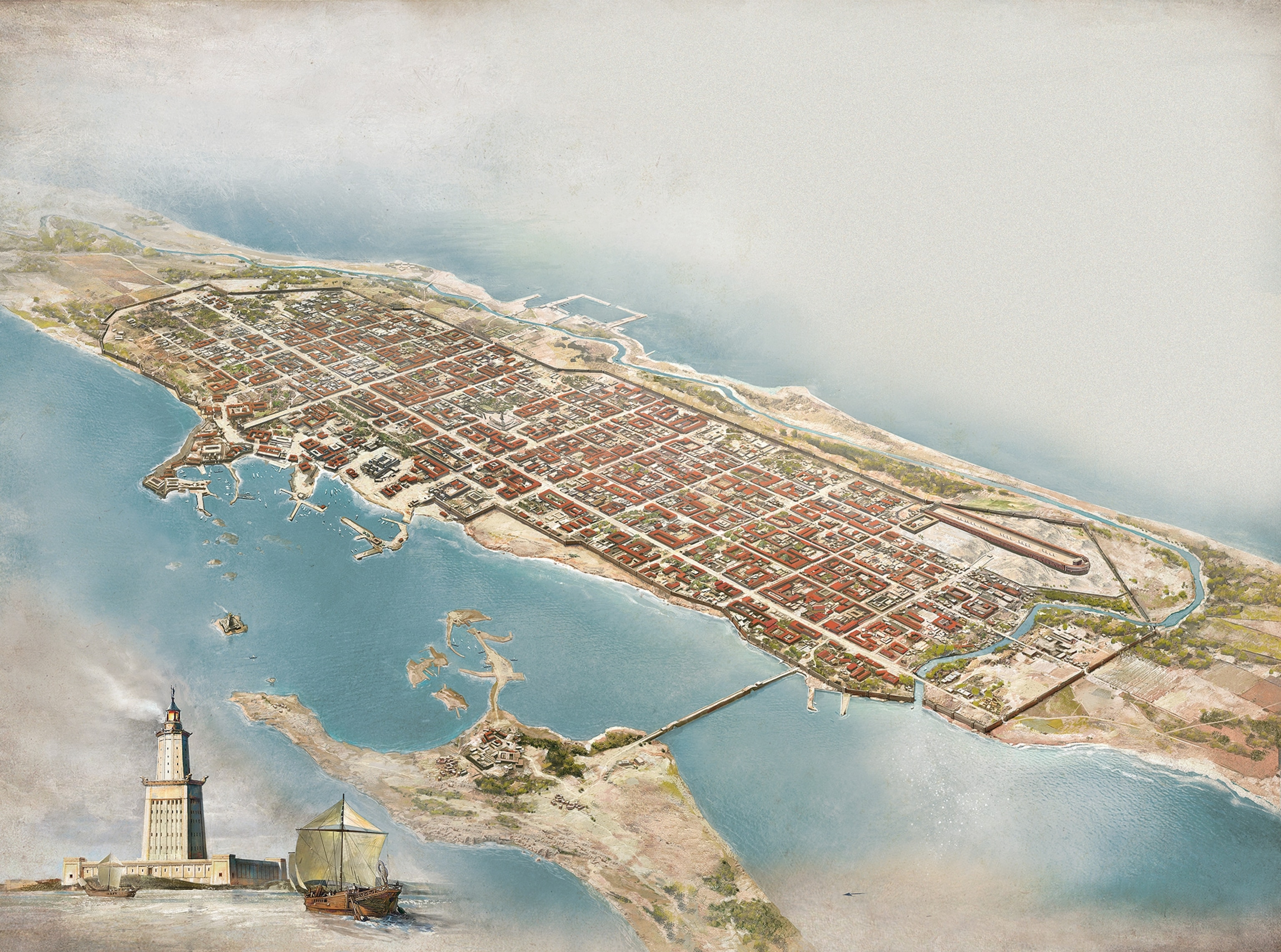
The placement of the lighthouse was carefully selected. Off the coast of Alexandria was a small island, Pharos. It was celebrated in Greek culture, since it was in Pharos that Menelaus—one of the Greek warriors of The Iliad and The Odyssey—was stranded on his return from the Trojan War. According to Plutarch, Homer himself had appeared in Alexander’s dreams, to quote his own lines about the island: “Now, there’s an island out in the ocean’s heavy surge, well off the Egyptian coast—they call it Pharos . . . There’s a snug harbor there.” When Alexander awoke, he looked for the island and, upon finding it, said that the ancient poet was “not only admirable in other ways, but also was a very wise architect.”
(Excavations in Alexandria provide hints to Alexander the Great's final resting place.)
In the westernmost part of the island, an islet, barely separated from Pharos by the sea, was selected for the new building. The lighthouse tower was a singular structure—the first of its kind erected by any civilization. It took the name of the neighboring island, and that is how the word pharos came to mean “lighthouse” in Greek (with Spanish and Italian borrowing it in their faro).
The founder of the Greek dynasty of Egypt’s pharaohs, Ptolemy I Soter, initiated building Alexandria’s lighthouse. Ptolemy I was a Macedonian nobleman who gained control of Egypt in the aftermath of Alexander’s death in 323 B.C. The project was completed during the reign of his son, Ptolemy II Philadelphus. According to Pliny the Elder, the Roman historian, one of these Ptolemies was generous enough to allow the name of the architect, Sostratus of Cnidus, “to be inscribed on the very fabric of the building.”
Lucian, a writer from the second century A.D., had a more devious—and fanciful— explanation: “After he had built the work, he wrote his name on the masonry inside, covered it with gypsum, and having hidden it, inscribed the name of the reigning king. He knew, as actually happened, that in a very short time the letters would fall away with the plaster and his name would be revealed.”
Artifacts of Alexandria
Blazing beacon
The building, like so many of the constructions erected by the first Ptolemaic pharaohs, was magnificent. Pliny noted that it cost 800 talents (about 23 tons of silver) to build—about a tenth of the king’s entire treasury. By comparison, the Parthenon, built a century and a half before the lighthouse, cost roughly 469 talents.
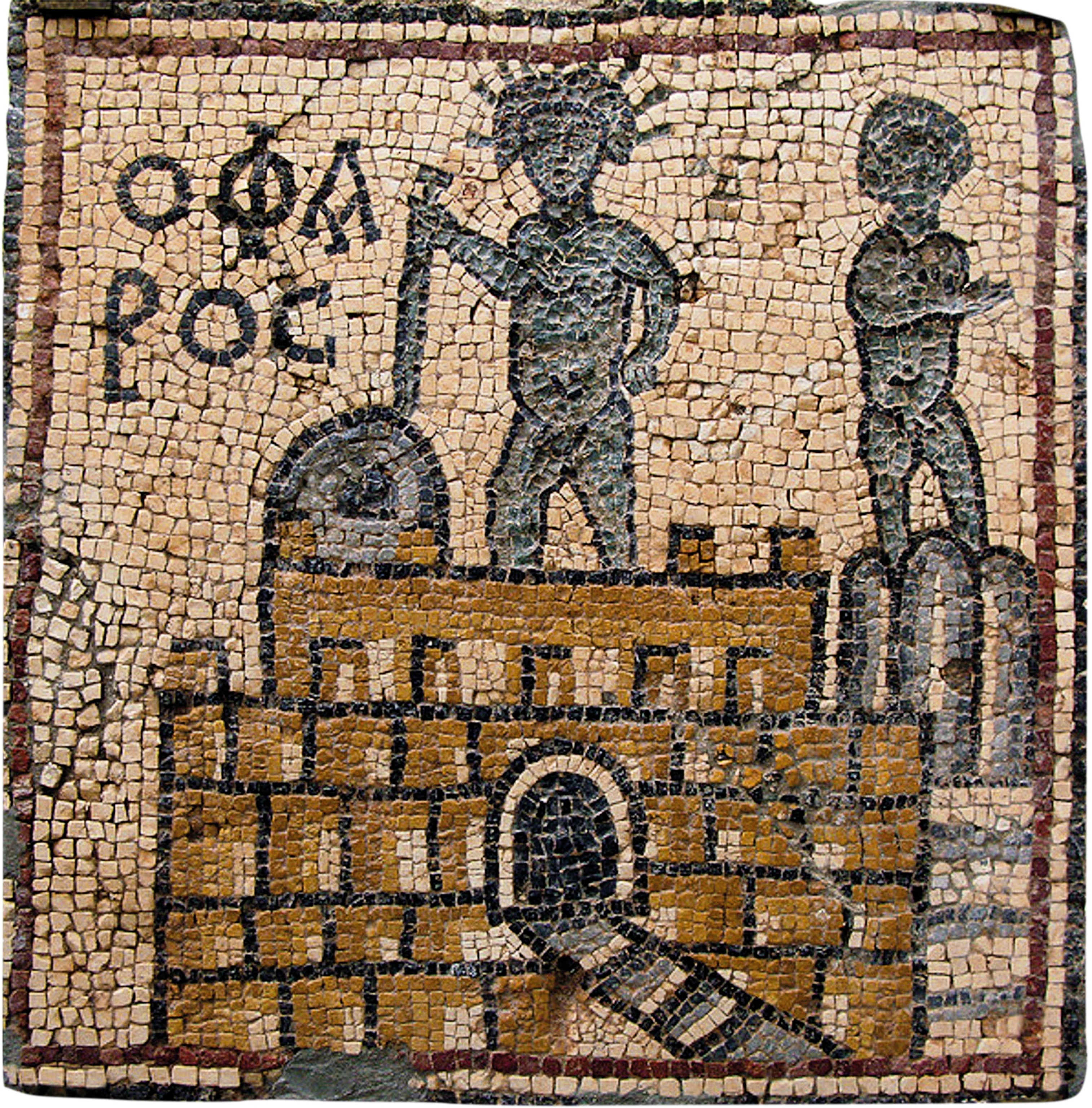
The lighthouse served its purpose perfectly: During the day, sailors could use it to navigate; at night, they could safely spot the harbor. Standing more than 350 feet tall, the lighthouse could be seen from 34 miles away—a whole day’s sailing—according to the Jewish historian Josephus. The fire burning at the summit of the lighthouse was so bright that it could be mistaken for a star in the dark. During the day, the smoke alone made it visible from a great distance. Wood was scarce in Egypt, leading many scholars to believe the fire was fueled by oil or papyrus.
It also seems probable that a large, burnished metal plank, or perhaps some kind of glass, was installed to act as a mirror, reflecting the glow of the flame. In medieval times, Arab authors, fascinated by the building, would fantasize that the mirror was in fact used like a magnifying glass, to harness and direct the power of the sun against any enemy ship approaching the harbor, incinerating it before it could get any closer.
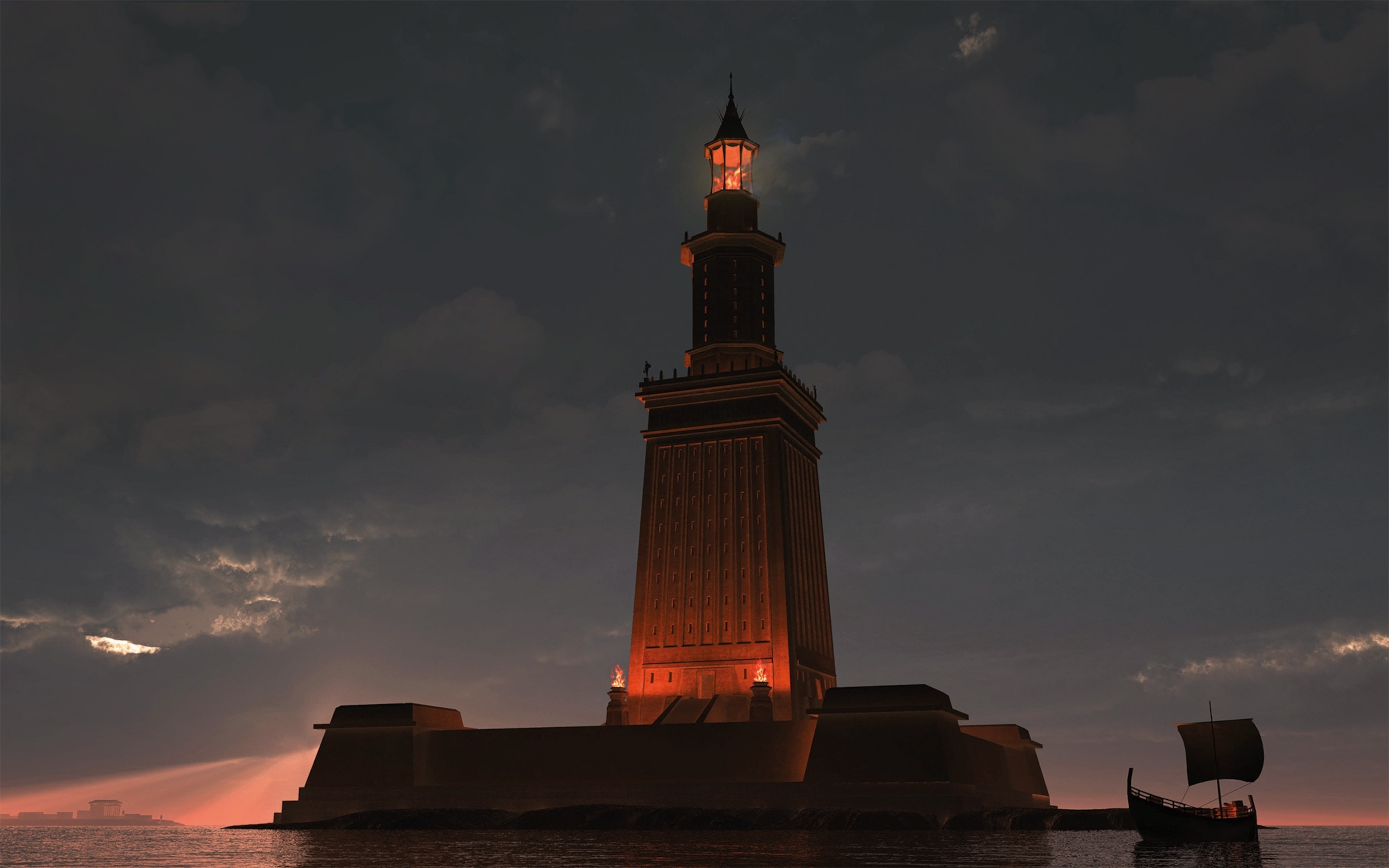
Some scholars have considered the possibility that the lighthouse also featured an ancient “fog horn” that would sound when the coast was shrouded by clouds. Arabic accounts describe “terrible voices” coming out of the building. The exact mechanism for an audio warning has not been identified. Some speculate that the tritons blowing conch shells along the uppermost tier of the lighthouse could have served a practical purpose as well as a decorative one.
Shining reputation
The lighthouse quickly became an object of admiration. Some ancient authors included it in their lists of the Seven Wonders of the Ancient World. Those able to contemplate it closely, like Julius Caesar, were impressed by its height and its magnificent workmanship.
(Discover the Colossus of Rhodes, the bronze wonder of the ancient world.)
The lighthouse remained an impressive symbol of pride and achievement. Roman coins from Alexandria dating to between A.D. 81 and 192 featured the tower. Despite its fame, the lighthouse was not impervious to the ravages of time: In the mid-first century B.C., the last queen of the Ptolemaic dynasty, Cleopatra VII, commissioned the first restoration of the tower.
When the Arabs conquered Egypt nearly 700 years later, the lighthouse was still standing. Little by little, however, the earthquakes that shook Egypt during the Middle Ages destroyed the building. In the 14th century, Ibn Battutah, the famous Moroccan traveler, expressed his distress at the sorry state of the building.
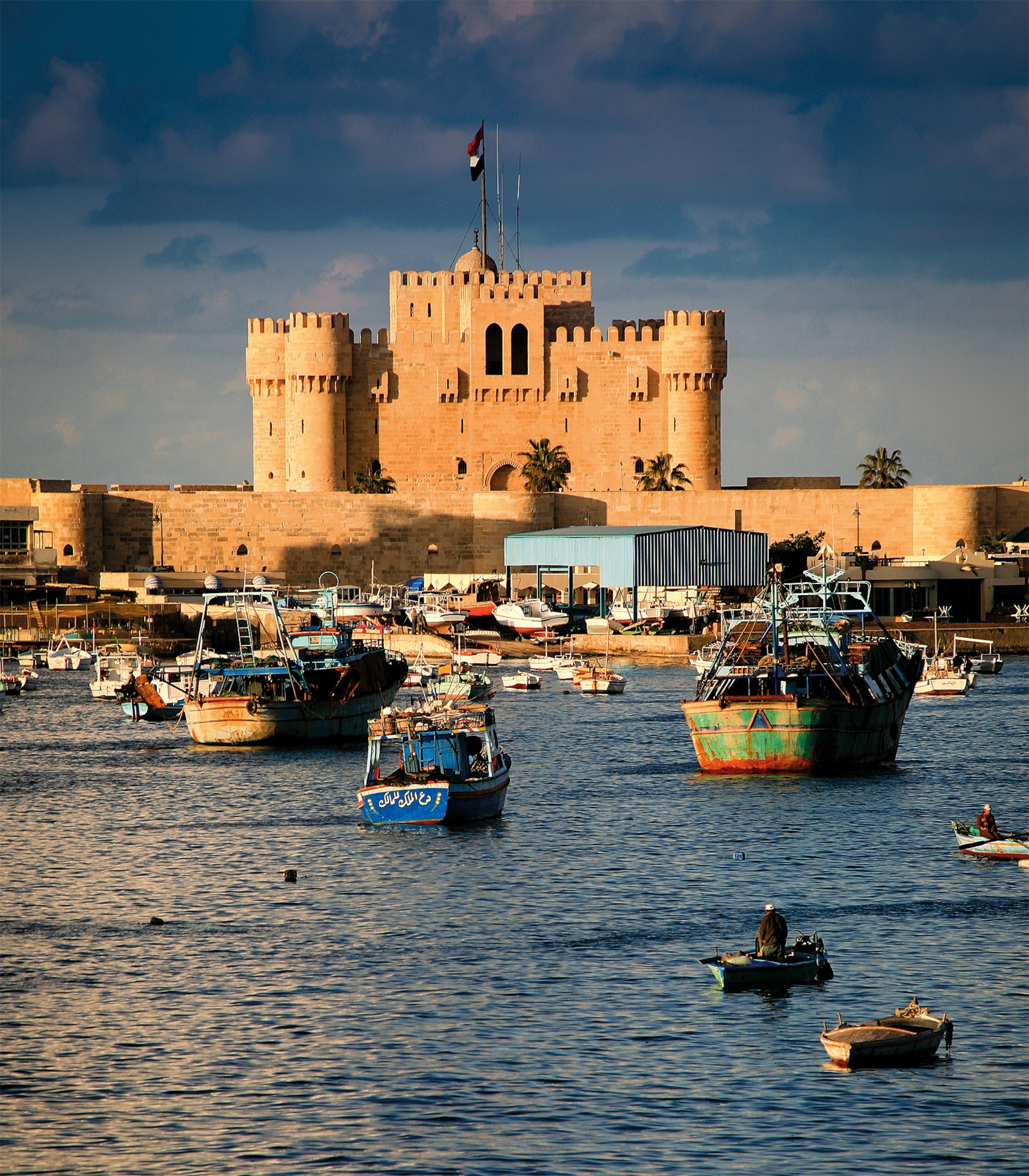
In 1477, with the lighthouse reduced to a pile of ruins, a Mamluk sultan ordered that the remains be used in the construction of the Citadel of Qaitbay, still standing today. The lighthouse was one of the most enduring of the seven ancient wonders—only the Mauseoleum at Halicarnassus and the Great Pyramid of Giza outlasted it.
Submerged wonders
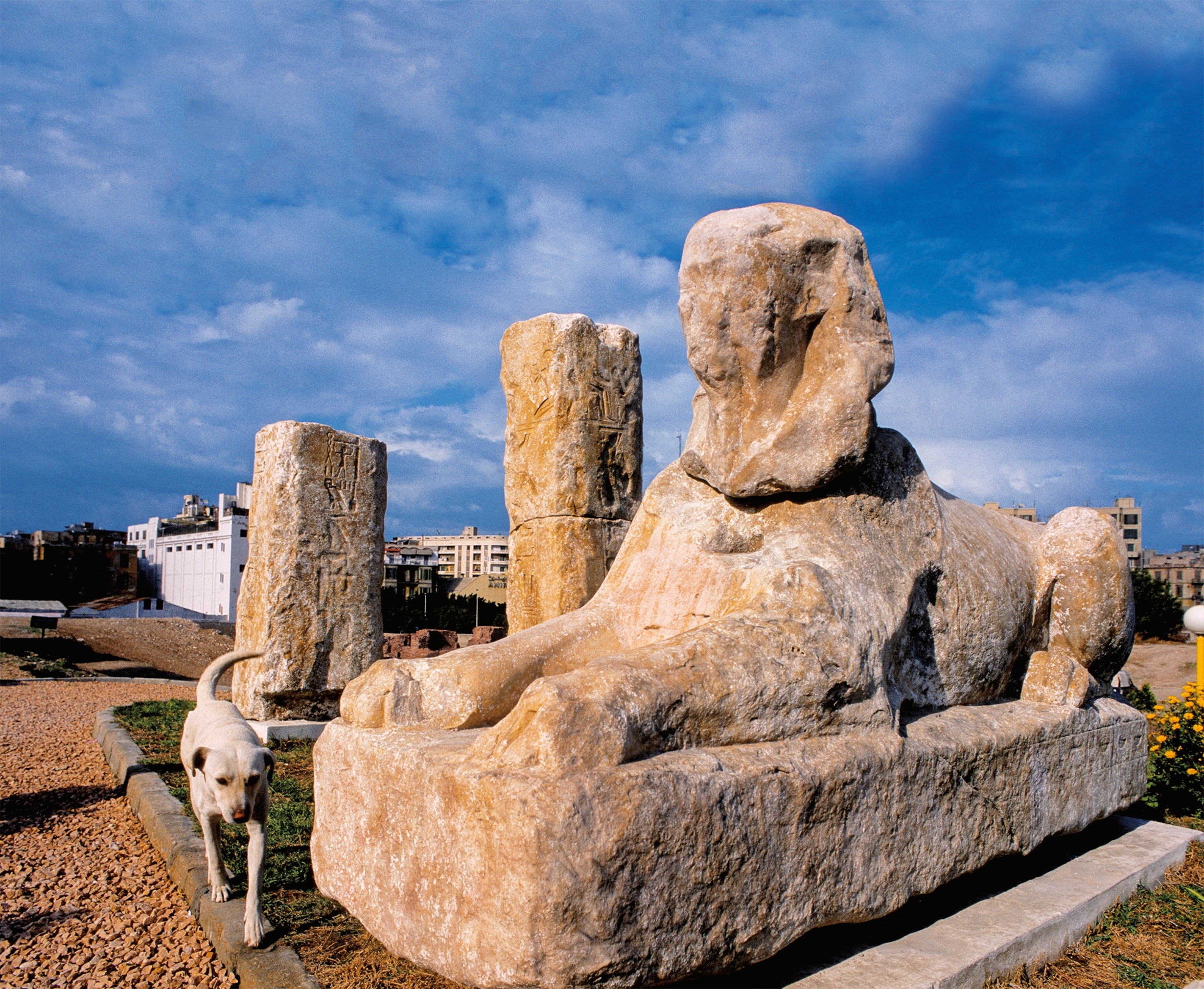
In 1994 a Franco-Egyptian submarine excavation next to the Citadel of Qaitbay found hundreds of marble and granite columns, plus two dozen sphinxes. All these elements had been reused from previous monuments. The remains of the colossal statues of five Ptolemaic pharaohs—believed to have stood at the entry to the lighthouse—were also found.
The most surprising discoveries were blocks of pink granite from Aswan, spread over the seabed as if they had fallen from a great height. Their dimensions—over 36 feet long and weighing more than 70 tons— and the quality of their cut indicate they are probably remains of the lighthouse. These pieces were used in key parts of the building—critical sections where the legendary endurance of granite rock was necessary.
Learn more
The Seven Wonders of the World: A History of the Modern Imagination. John and Elizabeth Romer, Henry Holt, New York, 1995.
The Rise and Fall of Alexandria. Justin Pollard and Howard Reid, Penguin Books, New York, 2007.

